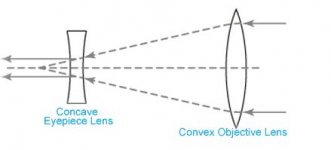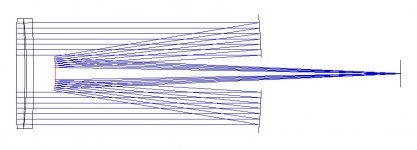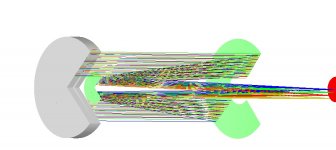cheeseontoast
Member
Hi folks
As a beginner, and with a lot of sometimes too detailed info out there and living nowhere near a good bino shop, in trying to decide between buying an 8x32 and an 8x42 bino I would like to ask, in theory;
1) Do all the rays of light coming through an (one) eyepiece come out parallel?
2) So if my pupil is 5mm, the exit pupil is 5mm and both are aligned then everything the objective gathers will be on my retina?
If so, considering the quite sizeable difference in area between a 32 and 42mm objective, why does nearly every (like for like) comparative review between such sizes describe the difference in brightness as being so small (usually), to the extent it nearly makes no worthwhile difference carrying the bigger pair just from a brightness point of view?
Where does all that extra light the 42mm gathers go? Is it equally spread over the wider field of view most likely apparent?
So in reality the trade off is between portage and ease (rather than quality) of view? (Quality?!? :eek!: Why did he use that word?!)
If someone asks which bino for carrying on a walk or trip 32's are often suggested, but reading generally on this forum most seem to actually use bigger. Is general advice at any given budget so ingrained to ignore what most with experience actually end up doing? Reinforced in the Zeiss UK interview as one specific instance https://www.birdforum.net/showthread.php?p=3925387#post3925387
A 2-300 gram saving is nice, but that degree of saving could easily be lost depending how much spare fruit cake etc is also carried.
As a beginner, and with a lot of sometimes too detailed info out there and living nowhere near a good bino shop, in trying to decide between buying an 8x32 and an 8x42 bino I would like to ask, in theory;
1) Do all the rays of light coming through an (one) eyepiece come out parallel?
2) So if my pupil is 5mm, the exit pupil is 5mm and both are aligned then everything the objective gathers will be on my retina?
If so, considering the quite sizeable difference in area between a 32 and 42mm objective, why does nearly every (like for like) comparative review between such sizes describe the difference in brightness as being so small (usually), to the extent it nearly makes no worthwhile difference carrying the bigger pair just from a brightness point of view?
Where does all that extra light the 42mm gathers go? Is it equally spread over the wider field of view most likely apparent?
So in reality the trade off is between portage and ease (rather than quality) of view? (Quality?!? :eek!: Why did he use that word?!)
If someone asks which bino for carrying on a walk or trip 32's are often suggested, but reading generally on this forum most seem to actually use bigger. Is general advice at any given budget so ingrained to ignore what most with experience actually end up doing? Reinforced in the Zeiss UK interview as one specific instance https://www.birdforum.net/showthread.php?p=3925387#post3925387
A 2-300 gram saving is nice, but that degree of saving could easily be lost depending how much spare fruit cake etc is also carried.








